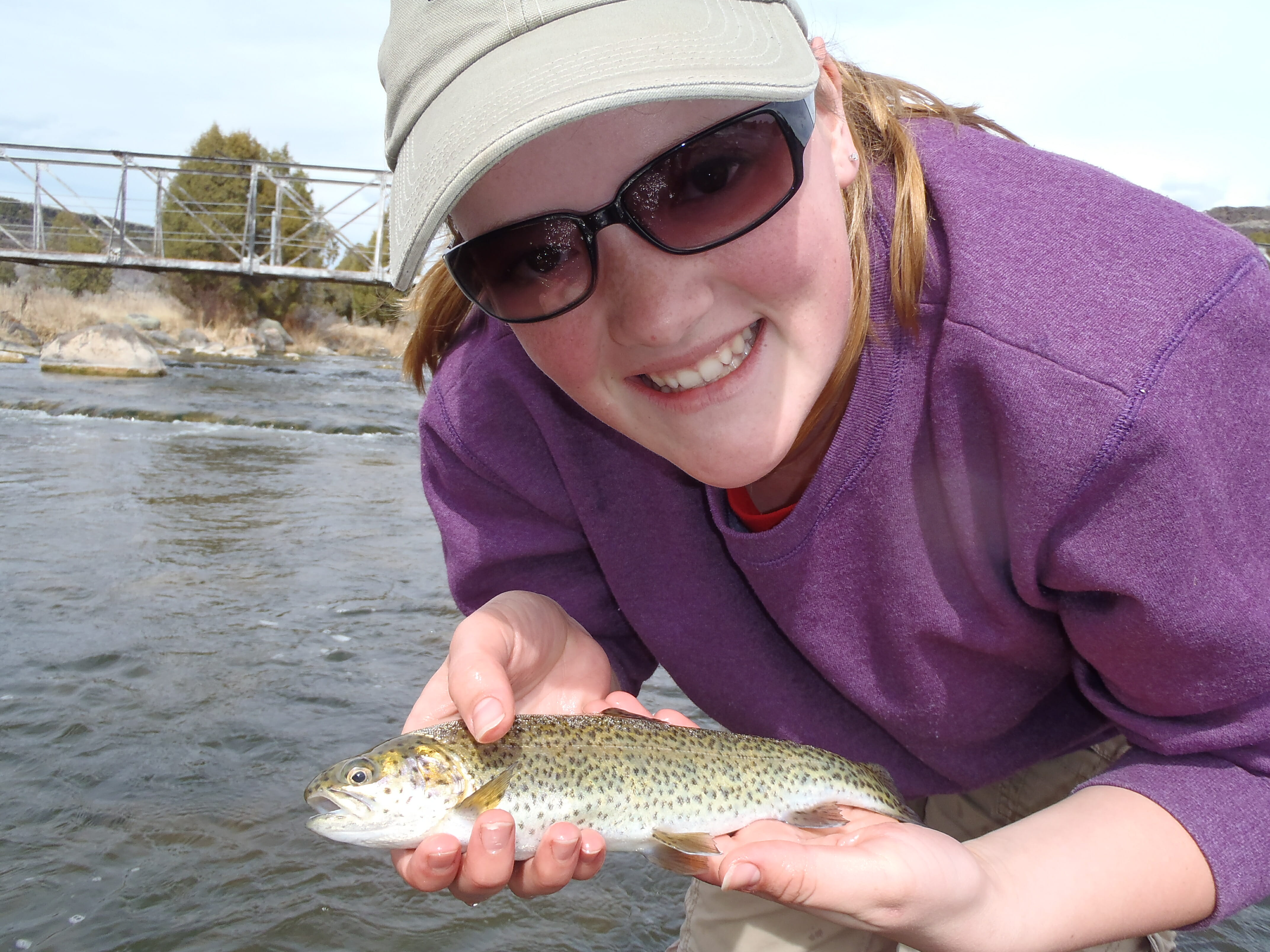Delaney Hunt with a Black Canyon rainbow. Photo by Chris Hunt.
The second chapter in TU’s newest book, “Trout Tips,” deals with fly selection. When we fish new water, we’re often mystified at what the trout we’re after might, in turn, be after. Hence the age-old question, “What’re they hitting?”
Several years ago, on southeast Idaho’s Bear River, I was having an excellent day pulling 12-15-inch rainbows out of the Black Canyon section near the tiny town of Grace using a weighted damselfly nymph that got deep, and got deep quickly. The fly, armed with a tungsten bead and a little “swimming” olive maribou tail, was the closest thing I could concoct to the real bugs that that tended to hover around the river’s many moss beds (if you’ve ever fished this section of river, you’re nodding your head right now with some enthusiasm). In the “channels” between mats of moss and weeds, trout would lie in wait in the “buffet line” for food to drift by. These little damsels were their favorite.
I was able to nab a dozen or so fish with this fly in just a few minutes—fishing was ridiculously easy, and I was in “the zone.”
It was then that I heard the voice from the side of the river.
“Excuse me,” a gentleman said. He was in waders and carrying a fly rod, and had actually removed his at—an act of overt politeness. I looked over at him and smiled.
“Would you mind telling me what you’re using?” he asked. “I’ve watched you catching fish and I’m not having nearly the luck you are.”
I wandered over to the bank and we struck up a consversation. He hadn’t fished this stretch of river before and was, obviously, tying to figure out what the trout were taking. I explained the river’s character, told him about the moss and the weeds and the channels that ran through them and then I dropped a couple of the little flies in his hand. I explained that, after several trials and errors at the vise, this fly seemed to have the right profile and, with the tungsten bead, enough weight to get it deep quickly. It matched the hatch, and matched the depth, the riding style, the profile … the whole enchilada.
It brings me to Tip No. 4 in Chapter 2: Profile Matters Most:
There are many factors that influence what a fish likes or doesn’t like about a fly—especially when you are matching naturals. Color… size… profile … materials (action), etc.: all matter to varying degrees. But if I had to pick the most important factors, I’d start with size and profile. How closely does the fly match the natural bugs in terms of size and general (very general, sometimes) shape? If you’re a tick off on color shade, and you have a big white calf-tail post, but from the bottom looking up, the fly is just about that right shape and size, you’re going to be in the game. Which is why the Parachute Adams is the best do-anything dry-fly pattern in the history of the world, in my humble opinion.
— Kirk Deeter
The second tip? For crying out loud, don’t be “that guy” on the water who doesn’t share information. It’s good manners, good etiquette and, I would argue, good karma.
For more great tips on flies, casting, gear and fly fishing in general, order your copy of “Trout Tips” today.
— Chris Hunt



